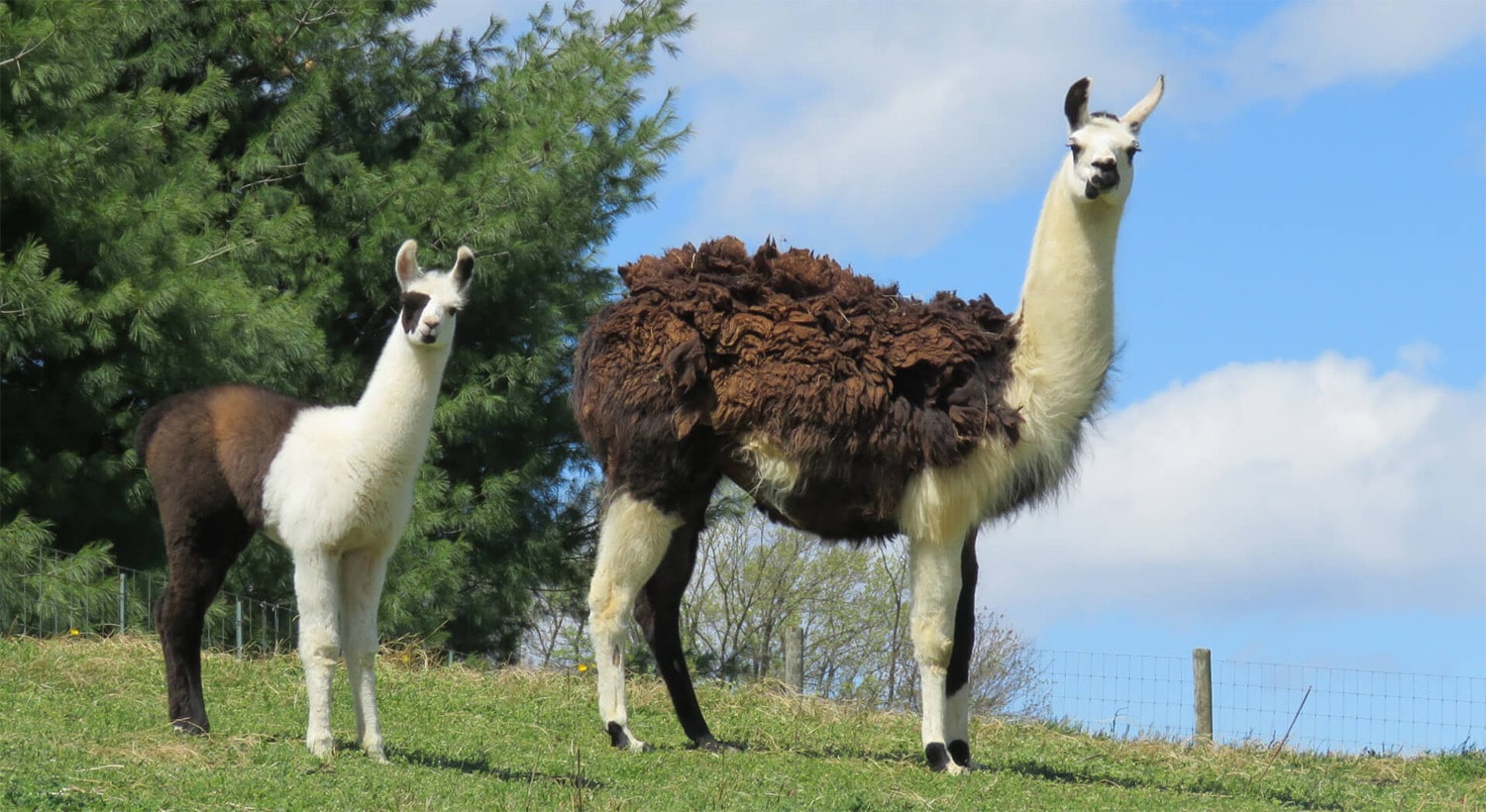
31 interesting facts about llamas
- 👁️ 242
Llamas, with their distinctive long necks and soft, woolly coats, are more than just picturesque animals adorning the landscapes of the Andes Mountains. These intelligent and social creatures have been integral to the culture and economy of Andean societies for thousands of years, providing transportation, wool, and companionship. Llamas are known for their hardy nature and ability to thrive in harsh environments where other livestock might falter. Their curious and gentle demeanor, combined with their efficiency as pack animals, has endeared them to people beyond their native South American habitats. Here are thirty-one fascinating facts about llamas that highlight their unique characteristics and importance.
- Llamas are domesticated South American camelids, closely related to alpacas, vicuñas, and guanacos.
- They originated from the central plains of North America over 40 million years ago and migrated to South America during the Great American Interchange approximately 3 million years ago.
- The Inca civilization used llamas extensively for carrying goods across the Andean mountains.
- Llamas can carry about 25 to 30 percent of their body weight, making them excellent pack animals.
- They have a lifespan of approximately 20 to 30 years.
- Llamas communicate through a series of hums, which can convey a range of emotions or messages to their herd.
- They are equipped with a unique digestive system, a three-chambered stomach, allowing them to efficiently process the sparse vegetation found in their high-altitude homes.
- Llama wool is hypoallergenic and does not contain lanolin, found in sheep’s wool.
- These animals play a crucial role in natural fertilization and soil health through their droppings, which are used as a rich manure.
- Llamas have two toes on each foot, with each toe equipped with a tough, nail-like hoof.
- Their social structure is hierarchical, and they establish a pecking order within their groups.
- Interestingly, llamas can spit as a form of defense or to establish dominance within their herd.
- They are herbivores, mainly grazing on grasses and herbs.
- Llamas require less water than most livestock, an adaptation to their arid mountainous environments.
- The breeding season for llamas is typically in the late summer to early fall.
- Female llamas gestate for about 11 months and usually give birth to a single offspring.
- Baby llamas are called crias.
- Llamas have large, almond-shaped eyes that provide them with excellent peripheral vision.
- They can run at speeds up to 35 mph over short distances.
- Llamas have been introduced to many parts of the world, including Europe, North America, and Australia, for their wool, as pack animals, and as pets.
- The Incas considered llamas sacred and often used them in ritual sacrifices.
- Unlike most animals, llamas do not have a waxy coating on their wool, making it very absorbent.
- They have an excellent sense of smell and hearing.
- Llamas were first domesticated in the Peruvian highlands around 4,000 to 5,000 years ago.
- Their thick wool helps protect them from cold temperatures in the high Andes.
- Llamas play a role in traditional Andean folk medicine and cultural ceremonies.
- They are known for their gentle and curious nature, making them popular in animal therapy and as companions.
- Llamas have been used by the US Department of Agriculture in guarding sheep from predators in the western states.
- Their foot structure minimizes environmental impact, making them ideal for trekking in sensitive ecosystems.
- Llamas can interbreed with alpacas to produce offspring known as huarizo, valued for their soft wool.
- In recent years, llamas have gained popularity in social media and pop culture, celebrated for their quirky and photogenic appearances.
In conclusion, llamas are remarkable animals that boast a rich history and a plethora of unique adaptations. Their significance to Andean cultures, their ecological benefits, and their growing popularity around the world underscore their importance beyond mere livestock. Llamas are a testament to nature’s ingenuity, offering insights into adaptation, cultural integration, and the bond between humans and animals. As we continue to learn from and with these fascinating creatures, their role in our world seems only to grow more diverse and profound.
Llamas, with their distinctive long necks and soft, woolly coats, are more than just picturesque animals adorning the landscapes of the Andes Mountains. These intelligent and social creatures have been integral to the culture and economy of Andean societies for thousands of years, providing transportation, wool, and companionship. Llamas are…